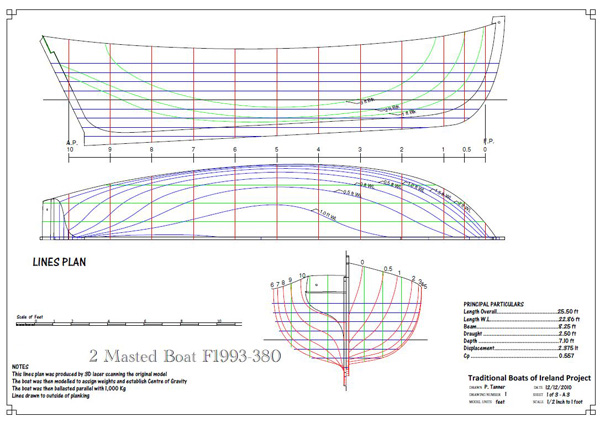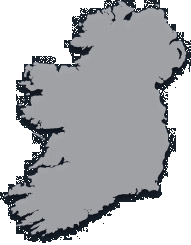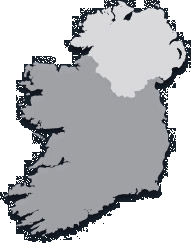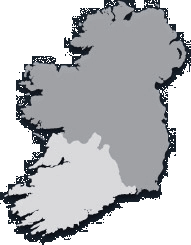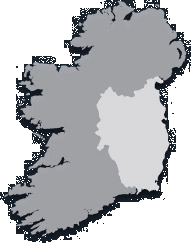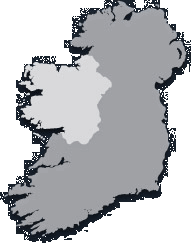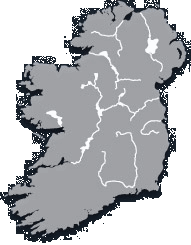Digitally recording our Maritime Heritage
Half hull boat models are wooden models used by boat builders of the past to design in 3 dimensions, the hull forms they would build.
Scale models are usually very accurate, scaled reproductions of actual boats that have been built and are used as display or presentation models.
 ___
___ ___
___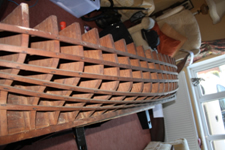
Scale or Presentation Model ________ Builders Half Model ________________ Builders Framed Model
These models can be found in great numbers spread throughout museums and private collections.
Although these models make attractive wall hangings they also represent a vast and untapped record of the history of boat design and our maritime heritage.
Given that most of the boats and their documentation is now lost, these models often represent our last ties to early designs.
However their 3 dimensional formats keeps the information they contain unavailable to Naval Architects, Scholars and boat or model builders. To make the information they represent useful again these models and indeed full size vessels need to be re-measured and re-drawn. Once they are converted back into linesplans, the information can more easily be compared and disseminated.
The stumbling block to converting these models and boats back into paper linesplans has usually been manpower. The process of manually measuring and re-drawing these 3 dimensional forms is very time consuming and as a result these projects are not often undertaken.
Traditionally drawn Lines Plans
– Any traditionally drawn lines plan would be subjected to further fairing on the loft floor.
– The intention being, that such fairing is minor and does not change the ultimate shape or form of the boat.
– Looking at Fife’s offset tables corrected from the loft floor, the corrections are usually less than 1/4 “, even on large yachts.
– With a notional accuracy of ± 1/2 ” at full size and a drawing scale of 3/8 ” = 1ft, this implies a drawing accuracy of 1/64 ” or 0.4mm.
Digitally created Lines Plans
The technology now exists to record a 3 dimensional representation of an existing model or full size vessel.
To this end The Traditional Boats Of Ireland Project purchased a Faro Platinum Arm1 , A Laser Scan Arm attachment2 , Geomagic Studio software3 , Rhino 3D software4 and Orca 3D software5 .
This process will typically record a 1m long model in a 3 dimensional point cloud containing upwards of 2 million points to an accuracy of ± 0.076mm. This recording is at least 5 times more accurate than the original Lines-plan drawing.
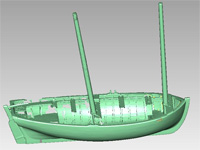 _______________
_______________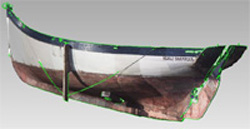
Scale Model _______________________________ Full Size Mackerel Boat
Point cloud of 2.39million points ________________ Point cloud scan of 1.89million color points
Recorded using Faro Laser Scan Arm ___________ Recorded with Trimble GS101 scanner
Using Geomagic Studio the 3 dimensional point cloud made up of millions of x, y, and z coordinates is then fitted with a triangulated mesh known as a Polygon mesh. This polygon mesh surface can then be exported to Rhinoceros or further refined to create a watertight NURB surface model. The NURB surface stage further refines the surface of the 3 dimensional model and can help to remove extraneous details such as scanner noise, but care must be taken not to refine out any important or required surface detail and the deviation from the original point cloud is always checked to ensure tolerances are maintained.
Once the scanned model has been exported to Rhino the required linesplan, main and additional dimensions, hydrostatic data and form coefficients can be extracted.
Output:
The intention is to create a traditional yacht linesplan in a 2 dimensional format, together with hydrostatic data and form coefficients.
In all cases it is assumed that the vessel was originally designed in imperial units and this should be the basis for the new plans.
In order for the plans to be useful for comparison purposes, the linesplan should be generated following standard conventions.
1. A Plan View showing waterlines and deck edge with buttock spacing
2. A Profile View showing the buttocks, centreline profile and waterline spacing
3. Sections or Bodyplan with the forward sections on one side, usually the right and the after sections on the other side, again showing buttock and waterline spacing.
– Waterlines are lines parallel to the water surface
– Buttocks are lines parallel to the longitudinal axis and perpendicular to the waterlines
– Sections are parallel to the transverse axis and perpendicular to the waterlines
The normal procedure would be to divide the D.W.L. equally with station 0 at the forward end or F.P. and station 10 at the after end or A.P. This spacing is then continued to the ends of the vessel. Half stations can also be used at the fore and aft ends.
Waterlines and buttocks will normally follow traditional practice and be equi-spaced at say 12” intervals.
Waterlines above the D.W.L. may be double spaced to simplify the drawing and make it more legible.
In the case of scanned models the 3D model is effectively free in space and we need to define how it is intended to float in order to go any further. As all the lines in a linesplan are related to the datum waterline this must first be established on the 3 dimensional models.
This can be established by using known measurements such as waterline length and draft, or from actual markings such as painted or scribed lines on the original.
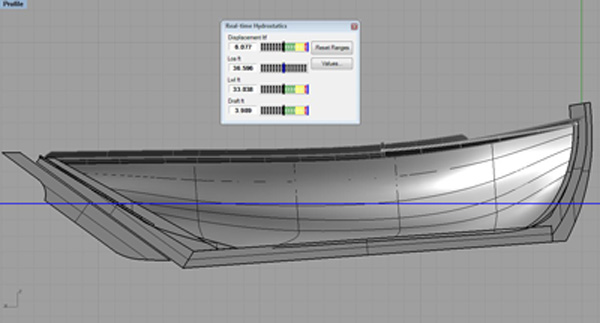
Here the model is being rotated to match its floatation conditions based on known measurements.
If the D.W.L. is unknown the model will need to be assessed to establish a floatation plane.
The most accurate way to do this is to recreate each constituent part of the vessel using its measured dimensions and assign a material in order to obtain its centre of gravity and weight.
Orca Marine can then combine all of this data to generate a floatation condition giving centre of gravity and centre of buoyancy.
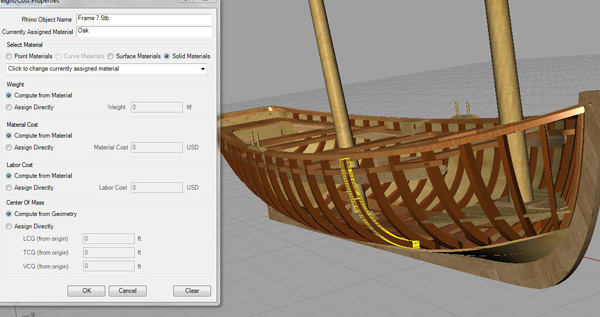
Here the individually modelled parts are being assigned a solid material and their weight and centre of mass is set to be computed directly from the material and geometry.
Next the design hydrostatics are performed using the information created by the weight report in order to orient the vessel to its correct floatation condition.
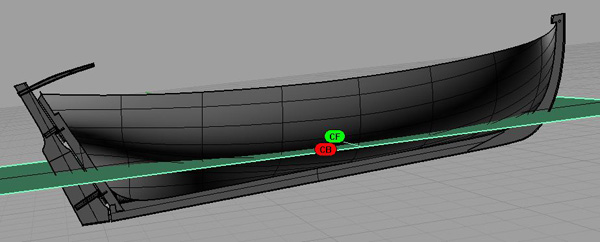
This image shows the resultant floatation condition based on the calculated weight of the constituent parts of the vessel.
This will orient the vessel in 3 dimensional space according to its floatation characteristics. At this point the vessel is floating in light-ship configuration, and if desired, internal ballast can be assigned a location and weight to modify the floatation condition. This process can also be used to accurately model other influences such as crew weight and position as well as items such as cargo or stores. In fact the vessel can be modelled in light-ship, normal or fully laden displacement formats.
In the absence of any known dimensions, such as an unknown or unidentified model where scale or other dimensions are not recorded this is the most accurate method to establish the floatation characteristics of the vessel.
Once the model has been correctly orientated in 3D space Orca 3D can then be used to position the desired waterlines, sections and buttocks and produce a traditional lines-plan.
It is also possible to output the desired hydrostatic and form coefficient reports.
